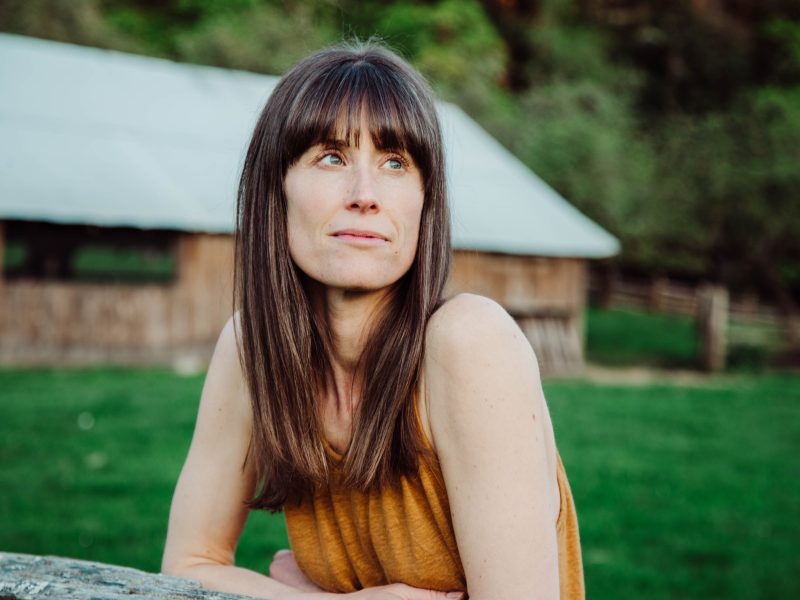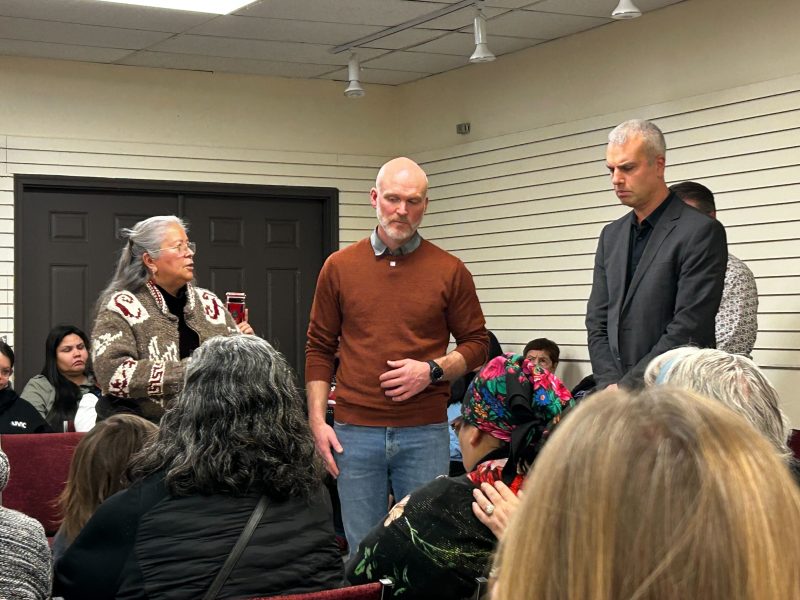
Smoke caused by the U.S. wildfires continues to blanket regions of B.C., with air quality risk levels as high as they can be in parts of the province. The Discourse asked Environment Canada meteorologist Carmen Hartt just what the air quality index levels mean, how the smoke is forecasted and what residents can do to interpret the data.
Air quality, by the numbers
The Air Quality Health Index (AQHI) uses a scale of one to “10+” to show what health risks are associated with the air people breathe. Hartt says the index was developed by the federal government in partnership with health authorities.
The AQHI measures three components in the air: ozone, nitrogen dioxide and fine particulate matter. Fine particulate matter (PM2.5) is smaller than 2.5 micrometres across. It’s really what meteorologists are concerned about when it comes to these smoky skies because the matter is made up of very fine ash that comes from smoke, Hartt says. The ash can be made up of both natural sources like brush and trees as well as chemical sources when buildings or other parts of towns burn.
“I’m not a health specialist in any way at all but it’s my understanding that’s what really impacts human health, other animals and other life as well, including plants,” Hartt says.
She notes that 10 micrograms per cubic metre of fine particulate matter is normally what we’re used to. In the last six days, however, those numbers have been consistently above 100 for much of southern of B.C.
Researchers at Berkeley Earth estimate that the health impact of 22 micrograms per cubic metre of fine particulate matter is equivalent to smoking one cigarette over the course of a day. The 24-hour average level of fine particulates in Duncan topped out this week at about 150, or nearly seven cigarettes.

What does a 10+ air quality rating mean?
On Wednesday, the AQHI rating for Vancouver Island and southern B.C. was forecasted to hit highs of 10+ for the next day or so, indicating a very high risk. The reason why the scale stops at 10+, Hartt says, is because the advice given to the general public at that point would be the same: reduce exposure to the smoke, stay hydrated and avoid strenuous outdoor activities.
The province’s Smoky Skies Bulletin includes tips for avoiding smoke and monitoring symptoms.
Hartt recommends visiting Environment Canada’s website for forecasts and current alerts but says sites that show readings of fine particulate matter can be used to see data as well.
PurpleAir, for example, offers readings of fine particulate matter at various monitoring sites, including graphs of the trend and basic interpretation of expected health impacts.

Shifting forecasts
Hartt says forecasts on when the smoke will lift are fluid and can change depending on the weather. She says the air quality models used by Environment Canada measure a 48- to 72-hour time period. Longer-term smoke forecasts, like weather forecasts, are challenging.
And smoke can sometimes linger when not expected to, Hartt says.“It’s almost like it’s been trapped. So when we expect it to clear out it can get trapped near the surface and stay very persistent,” Hartt says.
What helps the smoke become untrapped are weather systems that move through the area. Wind blowing in the opposite direction of the wildfires and precipitation – both associated with low-pressure systems – can make a big difference, Hartt says.
While recent precipitation in parts of B.C. showed some improvement in the air quality, a larger weather system is needed to “flush out” the smoke, Hartt says.
Smoke might stick around
For Vancouver Island, Hartt says residents can expect a slight reprieve with some precipitation on the weekend but it won’t be enough to blow all of the smoke away. However, a bigger difference in air quality might be noticeable by the middle of next week.
Looking at data from the past 20 years, Hartt says smoke events could become more frequent with the changing climate. In the short term, she says she “wouldn’t be surprised” if more smoke events come about in the next few weeks or months.
“From what I’ve seen, the fires are really bad in California,” Hartt says. “Throughout this fall we might see more smoke from them, depending on weather patterns.”
B.C. saw very active wildfire seasons in 2017 and 2018, Hartt says. The worst year in the last two decades for the number of hours of smoke was 2018, Hartt says. According to a data table that Hartt emailed to The Discourse, Victoria has seen four consecutive days of smoke during this six-day event. This exceeds the nine-day smoke event that took place in August 2018, which saw three consecutive days.
Depending on what happens in the next month or so, the total number of days of smoke this year could exceed 2018.
“I think as a society we’re going to have to look at smoke policies, because we’ve had to ask what to do when there are large scale smoke events,” Hartt says. “It’s not a one-off. It’s something we should start planning for.”
Explore maps and data
- The province’s air quality maps include readings for fine particulate matter averaged over one hour and 24 hours in addition to the Air Quality Health Index and other indicators.
- The Cowichan Valley Regional District’s air quality map pulls in data from different sources across the region.
- PurpleAir and IQAir are both popular websites for global air quality maps and data.
- Berkeley Earth’s map offers a powerful visual representation of real-time air quality around the world. [end]



